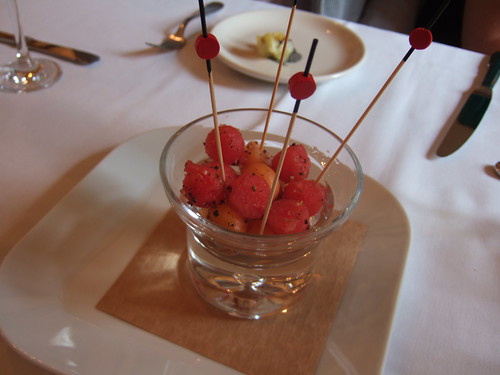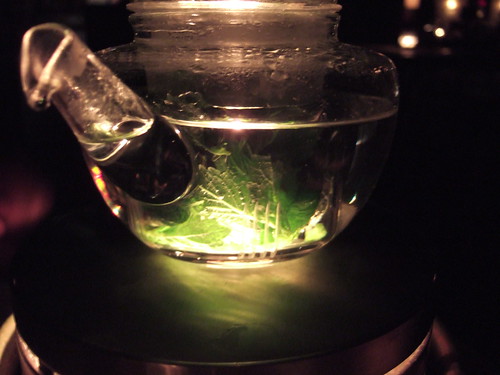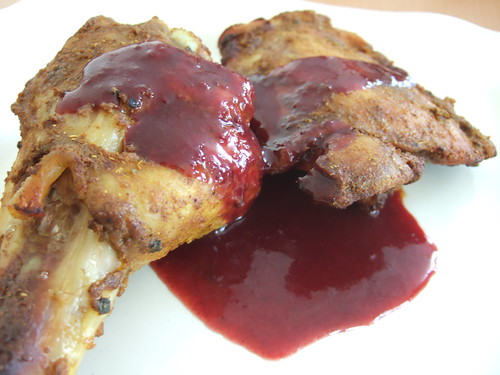630 Bedford Road, Pocantico Hills
914/366.9600
$720 for three tasting menus, with wine pairing, with tip
♥ ♥ ♥ ♥
Is there such a thing as too much? We arrived at Blue Hill Stone Barns just in time for our 5pm table where we were welcomed by fresh air and green grass. We sat in the lounge with our pickled ramps and cucumber martinis and black currant cosmo while they prepared the dining room. When we were seated, we met our waiter for the evening, Andrew, who happens to be from Brooklyn. He also introduced us to the sommelier, Thomas, after we decided that the farmer’s feast tasting menu with the wine pairings was the way to go. We hoped to stay for less than four hours–we thought it would be enough time to eat, chill and take the 40-minute train ride home. So how did we end up staying until 11:30pm? And how did Andrew end up snipping fresh herb leaves for our tea while we sat out in the garden? Sometimes, you just accept things as they happen and try remember every detail the next day.
As far as I can recall, we had a few amuse-bouche that featured the summer tomatoes and watermelon from the Blue Hill gardens. There was a tomato gazpacho we drank like a shot, with small tapioca bubbles that tickled our tongues. There were small balls of watermelon and cantaloupe sprinkled with black pepper that were so playful they reminded me of our night at Alinea in Chicago. There were the colorful tomato pulps that otherwise would have been discarded stuck vertically on pins held by a wooden block.
There was feta cheese and watermelon granita served in small wine glasses–a sharp icicle-like texture and smoothie in our mouths. There were roasted heirloom tomatoes covered with goat cheese mixed with arugula. There was the watermelon sliced like a thick cracker, topped with crispy pancetta, currant tomatoes and goat cheese foam. It was a beautiful presentation using the simplest ingredients. Only several dips broke the watermelon-tomato parade: fresh ricotta with honey and black pepper, roasted eggplant, whipped lardo, arugula salt and carrot salt accompanied by Balthazar-baked bread.
One of the main dishes I remember was the waxed beans with farm-fresh egg sprinkled with pistachios, a Blue Hill stand-by. The egg was encrusted in breadcrumbs which made it fun to break. I recalled the chickens running free as soon as our cab entered the Stone Barns property. I pretty much checked out after that: there was pork belly served with the chicken mushrooms they were parading earlier in the evening, and then there was apparently a lamb belly with peas–I couldn’t tell the difference between the two after several glasses of wine. But I remembered the mock-risotto made of summer corn with tomato reduction. Andrew grated an embryonic egg as if it was aged cheese before we took our first taste. The desserts were, unfortunately, erased from my memory completely. I was told that there was a granita of some sort with some whipped cream, but a third one that involved cheesecake came with a lit candle. Andrew knew it was one our birthdays, but he couldn’t let the rest of the table feel left out so we all had our own candlelit dessert.
He could have stopped there, but he made us feel more special by inviting us to check the herb garden in the back. He snipped some of the mint and thyme leaves while we sat out in the garden. He made us some tea to end our evening. It was an expensive night, but one I will remember for a long time, even if some of the details escape me.
Related post/s:
I’ve been at the Blue Hills in the city twice, with a new friend visiting during dinner
Alinea in Chicago








